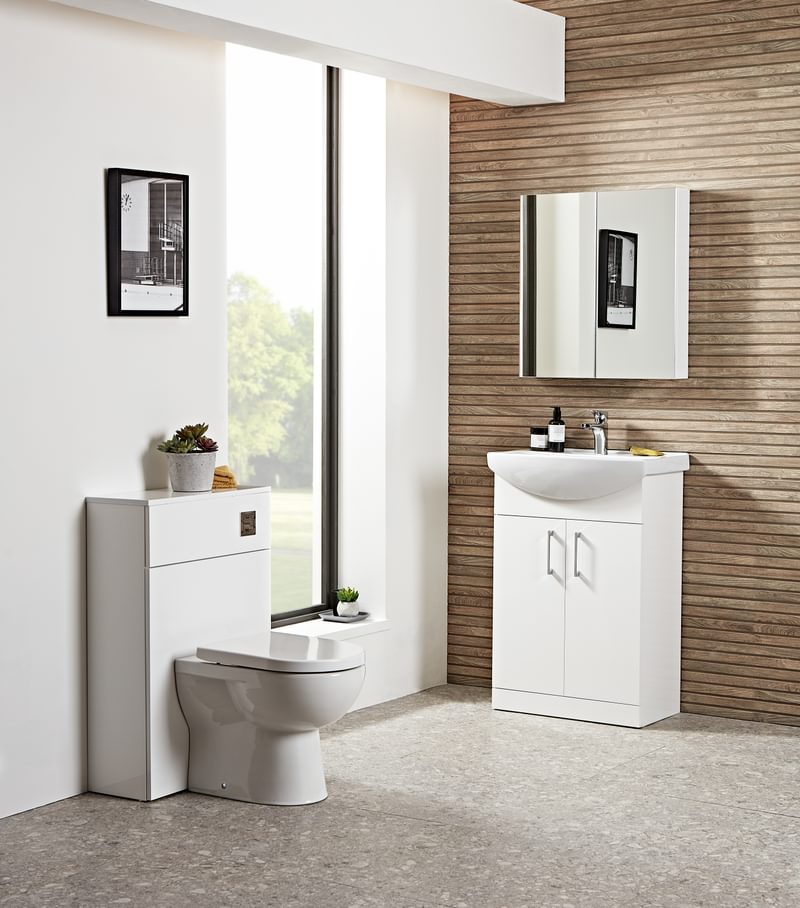
The Japandi Bathroom Trend
Japandi: a fusion of traditional Japanese minimalism, and rustic Scandinavian warmth.
With natural wood, neutral tones and clean lines, the style lends itself well to the bathroom. This trend oozes tranquillity making it perfect to create a spa-like bathroom feel. For anyone wishing to emulate this style, there are several key style pointers that encapsulate the Japandi style.
Neutral:
Scandi style has always aimed to create a sense of hygge, where comfort and cosiness is king. A neutral colour palette – using beiges, greys and whites compliments the natural materials that Japandi design so often sways towards. By using a colour palette that feels delicate and soft, a peace is created in the bathroom. Try neutral wall colours and Scandi inspired bathroom accessories to create that peaceful feel.
Wood:
The Japanese view ‘Wabi-Sabi’ roughly translates into finding the beauty in imperfections. One of the best examples of this, from an interior's perspective, are the grains in wood differing from piece to piece. From cladding a wall, to wooden furniture units, the bathroom is a great place to try out wooden pieces. Scandinavian style tends to edge more towards beeches and lighter woods, whilst Japanese design is richer in palette, with Japanese elm being a point of inspiration for many. Take a look here, for a little inspiration on how to insert wood into the bathroom.
Functionality:
One thing Japandi-styled rooms have at their core is functionality. There should be nothing in a room that doesn’t serve a purpose, which helps keep the aesthetic of the room crisp, clean and clear. This is a trait that suits bathrooms particularly well, with many British bathrooms being small spaces that can look cluttered very quickly.
Whilst this is a great idea in principle, it can be tough to minimise the cluttered countertops, bottles scattered across the shower floor or washing that so quickly piles up in a corner. To reduce the appearance of clutter, try selecting a Scandi furniture unit in keeping with the neutral colour scheme, that will keep all your bits and bobs hidden away.
Minimalism:
Japanese design has minimalism at its heart. Pared back styling creates a feeling of tranquillity and calm that suits the bathroom perfectly, adding to the spa-like appeal. Ensuring that each piece within the bathroom has its place and function, means that sleek minimalist style can be created.
Keeping accessories to a minimum is vital to Japandi design, and over styling can destruct the feeling of calm you will have worked so hard to create. For styling, stick to plants and plenty of greenery, and a fluffy towel or two for texture.

Texture:
In rooms where everything is neutral and pops of colour are non-existent, texture is key. Texture will stop a room from looking too clinical, or like a show-home, and ensure there is a cosiness to the space that may be limited with beiges and whites alone. This is a perfect time to try mixing woods, from Scandi-influenced light woods like beech, to rich elms traditional in Japanese interiors. The variety of woods will bring a variety of grains and textures to a bathroom and will complement each other well. Aside from structural texture, in the form of woods, it’s important to consider softer textures as well – especially for heightening hygge. Soft towels and woollen bathmats can create a softness and plush feeling in a bathroom that keep the space homely and not clinical.
Black Accents:
A similarity between Japanese and Scandi design is their love of black. Black, you may be thinking, seems a little harsh for a neutral colour scheme?! But the hue can add depth to a space and break up the sea of beige when applied tastefully. A particularly good way of adding black to the bathroom can be through black brassware, when replacing the chrome with black creates a particularly luxurious finish.









